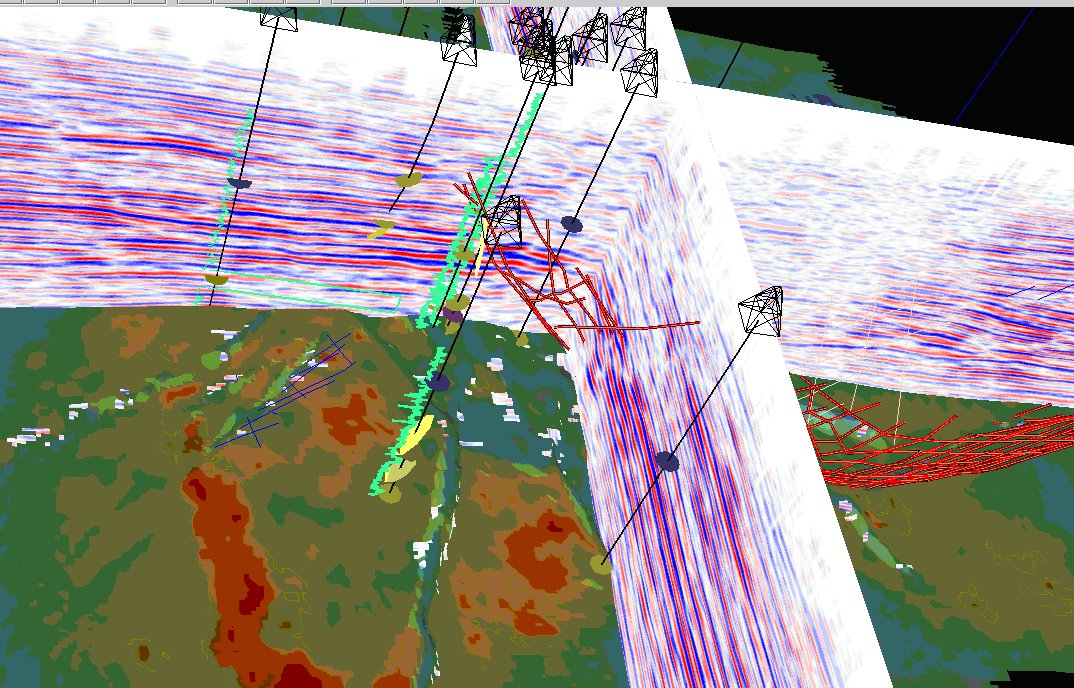SIS strategic roadmap
Dominique Pajot (SIS) placed Open Spirit (OS) on the Schlumberger Information Solutions (SIS) strategic roadmap. SIS’ OS-enabled products include: GeoFrame applications, FloGrid, Petrel, Inside Reality and Interactive Petrophysics. Standalone products include: VarianceCube, MathCube and SimCube. Finder and GeoFrame are now OS-enabled data stores. SIS has declared that OS will be its middleware technology ‘for all E&P upstream project and archival data access’. SIS applications will work similarly with all Open Spirit enabled data stores and SIS data stores will serve equally all Open Spirit enabled applications. Why is Schlumberger opening up its software line like this? Because ‘middleware is a commodity for SIS, not a differentiator’. In the future, SIS will compete on data stores and applications.
Does it work?
These data management applications are mainstream for SIS and have undergone very complete testing. But this was called into question by one oil company end user who complained that ‘[OS] doesn’t work! Petrel sees the catalog, not the data.’ SIS stated that, ‘What SIS delivers is supported by SIS, OS is an integral part of the SIS solution.’
Shell’s .NET migration
Winand Belmans described the role of OS in Shell’s migration from Unix to Microsoft’s .NET environment. Using Shell’s proprietary horizon tracking algorithm as a test bed, various migration scenarios are under investigation. Issues affecting the choice of migration route include 3D rendering and OpenGL. Belmans also reported issues with OS complexity and handling of user credentials. Belmans explained that Shell was moving to .NET as a corporate drive to reduce the cost of its desktops. Shell’s CIO judged that .NET offers a better total cost of ownership (TCO) than Linux.
Landmark’s plans
The title of Janet Hicks’ talk promised to reveal ‘how Landmark plans to use technology from OS in future releases’. Landmark believes in the future of ‘an Open E&P integration layer’ and believes that OS ‘might fall into this category’. Landmark’s own DecisionSpace object model middleware includes rules, servers connectors and sources, along with native mode GeoFrame data access. Hicks described this as a ‘fairly burdensome process’. Landmark is therefore testing two OS connectors in pilot projects with help from OS CTO Clay Harter. Hicks believes that from a marketing perspective, ‘OS looks attractive, and could reduce cost and R&D spend’.
WITSML in competition?
But Landmark has another option for application connectivity. Working with EU companies, Landmark is using WITSML to connect OpenWorks and its engineering data model (EDM) to stream data to GeoFrame. OpenWire (Landmark’s WITSML solution) has been shown to be a contender for interoperability. Hicks described Landmark’s full strategy for OS deployment as still ‘work in progress’.
Version 2.6 highlights
OS CTO Clay Harter presented the highlights from the new V2.6 release. These include an updated, faster Finder server, a new stratigraphic grid server module, new data management functionality with data selectors, copy sync and project scanning. A new drilling data module is also under development. A well log loader, developed for A2D’s SilverWire service will be extended to other commercial data.
SMT’s OS server
Seismic Micro Technology (SMT) president Tom Smith described how SMT’s Kingdom Suite uses Open Spirit, which it calls ‘Tunnel-O,’ to access OS datastores. Smith added that SMT is the ‘first seismic interpretation vendor to voluntarily develop an OS server’. Open Spirit opens up the market to other vendors’ data and to in-house project inventories. OS also eases project upgrades, and live data items may span different vendors’ projects. On the downside, OS suffers from a limited number of qualified data servers, a limited number of supported data items. Smith also criticized what he described as the ‘sink or swim’ attitude of some multinationals. Smith concluded by noting that OS is ‘the best cross-vendor solution’ for serving third party data to Kingdom projects.
End users
End users (developer) presentations included Total’s use of Open Spirit to link its in-house developed Sismage application, along with Gocad and Petrel, with OpenWorks and GeoFrame— a ‘good solution for 80% of users’. Chevron-Texaco’s SeisVu and its in-house PWA reservoir model builder also use OS middleware to integrate with commercial software.
Open Spirit 3D view of data in OpenWorks, GeoFrame and Finder.

This report is abstracted from a 7 page report produced as part of The Data Room’s Technology Watch Reporting Service. More from tw@oilit.com.
© Oil IT Journal - all rights reserved.